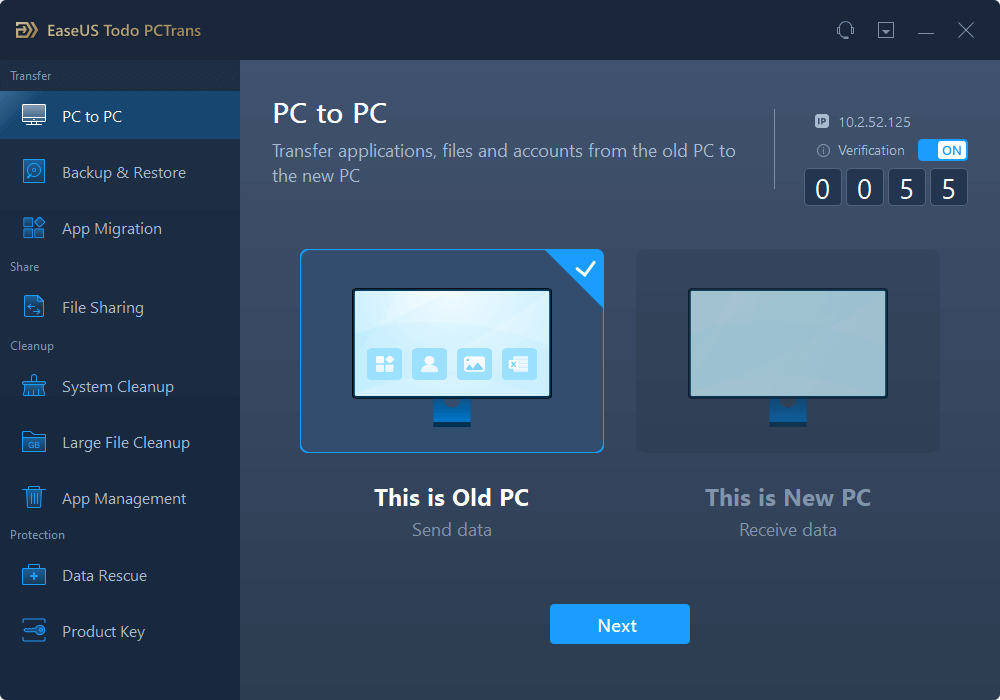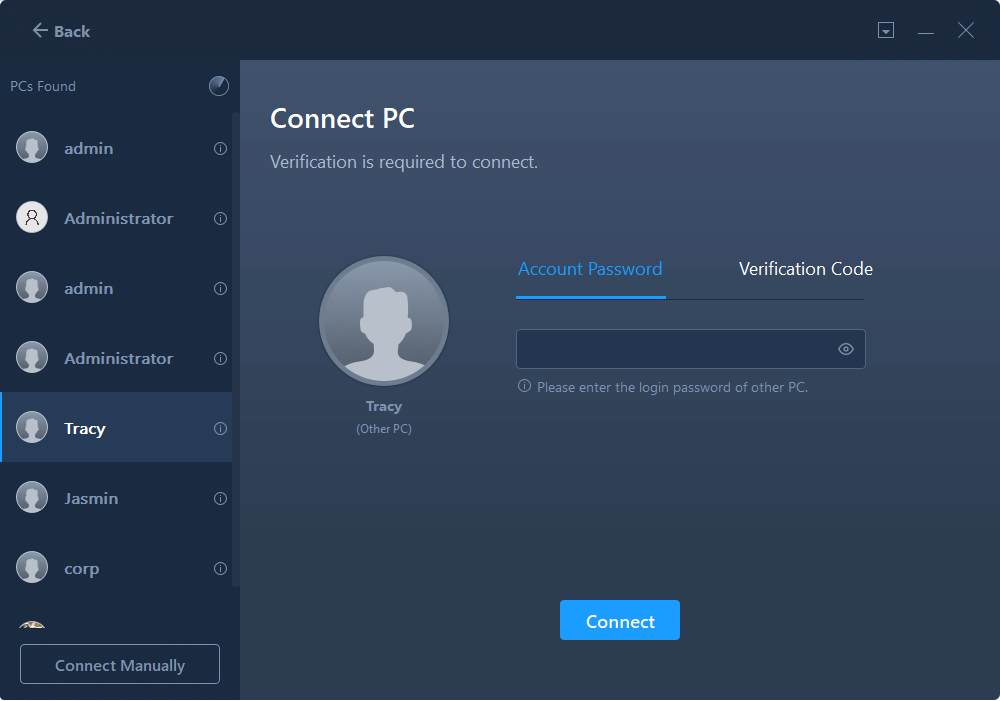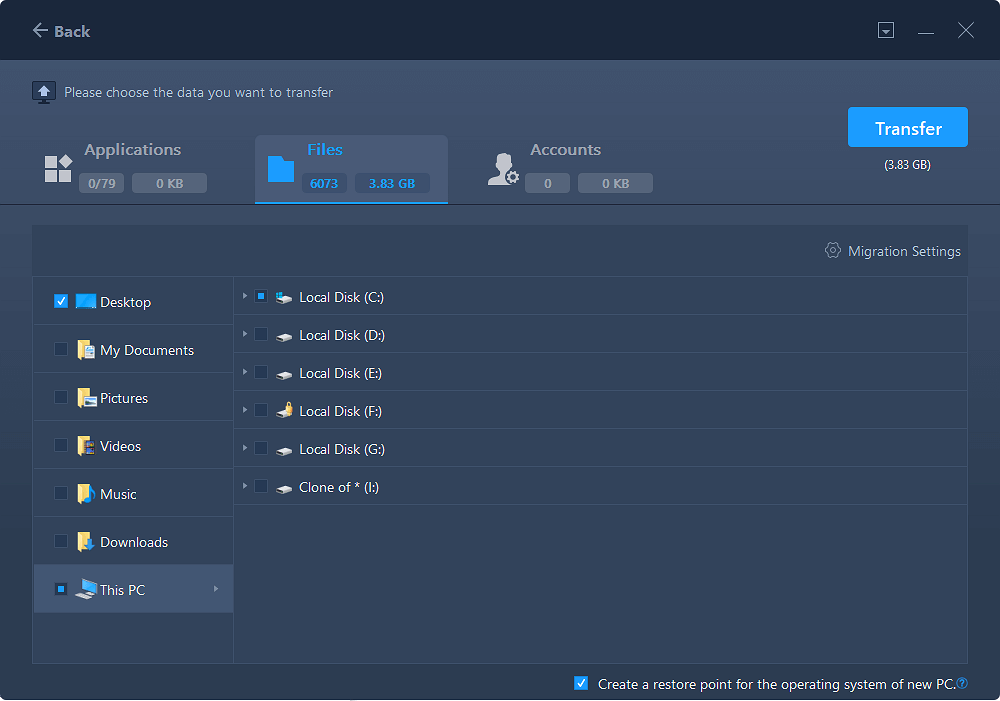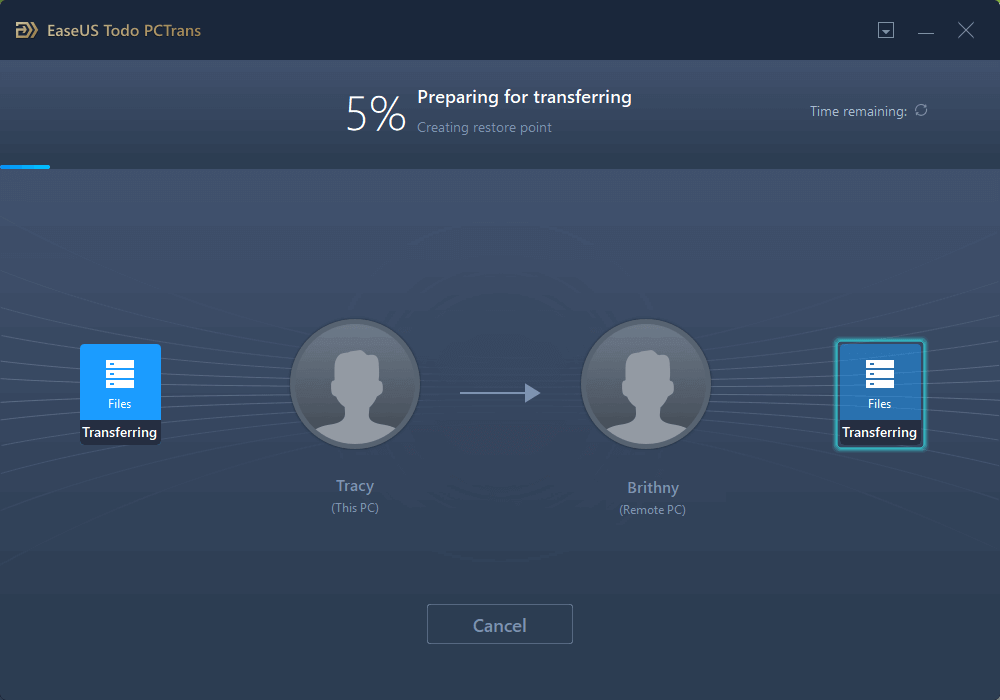Page Table of Contents
Reviews and Awards
Transferring data is quite common if you generally switch between one operating system to another. Most files you transfer from Windows to Linux can be essential when you work simultaneously to test the files in both systems. Even though it is a simple process, you can still get confused about it or lose your data through the transfer process.
If you switched between Windows and Linux and need a quick and easy solution, EaseUS will provide the right place for you. Here are some simple, step-by-step methods for transferring files from Windows to Linux.
How to Transfer Files from Windows to Linux
Transferring files from Windows to Linux will no longer be a challenging task. Here are some methods that you can try to transfer the files as quickly as possible. Choose one that seems feasible for you and get the best outcome as the solution.
| Transfer Method | Complexity | Suitable Users |
|---|---|---|
| EaseUS Todo PCTrans | Easy - can quickly transfer files using PC to PC feature | For computer beginners and experts |
| SSH | Hard - data can be shared through an SSH Server like OpenSSH |
Advanced users who want to control servers and use networks safely |
| FTP | Medium - transfer of files can be completed with an SFTP-supported app like FileZilla | Beginners who want to transfer files without using any commands |
| Virtual Machine | Medium - files can be migrated quickly if one of your systems is running in a VM | Users who need a virtual shared directory for data syncing |
| Sync Software | Medium - files can be transferred using a Sync software app like Resilio or SyncThing | Users who want to manage the connection between two devices with an encrypted key |
Personal Recommendation:
Learn more about EaseUS Todo PCTrans below, and try one of the following ways to transfer files between Windows and Linux. Remember to share this tutorial with others!
1. Use the Cross-System Transfer Tool
One of the most accessible methods is to transfer files from Windows to Linux across a network or tool shared on one or both systems. Tools like EaseUS Todo PCTrans offer a reliable transfer platform to help you get your files across quickly.
Download and install the tool on your device from the official EaseUS website. Now, you can run EaseUS Todo PCTrans on your devices and choose PC-to-PC transfer mode. Here's a detailed step-by-step guide on how to do so:
Note: You can connect both systems using a network connection like LAN or WiFi. Plus, the transfer process is quick and doesn't use many system resources.
Step 1. Open EaseUS Todo PCTrans on both of your computers. Choose "PC to PC" to go to the next step.
Step 2. Make sure you have chosen the right transfer direction.
"New" - Move data from old computer to current new computer.
"Old" - Move data from current old n computer to remote new computer.

Step 3. Connect two PCs via the network by entering the password or verification code of the target PC. Besides, make sure you have chosen the right transfer direction and click "Connect" to continue.
The verification code is on the right top of the "PC to PC" main screen on the target computer.

Step 4. Then, choose "Files" to select files to transfer. Select the specific files as you want. What's more, you can click the Edit icon to customize the storage path for transferred data.

Step 5. Now, click "Transfer" to begin to transfer files from PC to PC. The size of the file determines the transfer time. Wait patiently.

2. Use SSH to Copy Files Between Windows and Linux
Secure Shell (SSH), implemented by the OpenSSH suite, is another great option for securely transferring files between the operating systems. With SSH being enabled on your systems, you can control your servers. Plus, you can utilize network services even via an unsecured network.
Follow the below steps to transfer files between Windows and Linux through the command line:
Step 1. Open a terminal window on your Linux device. You can use Ctrl + Alt + T or Ctrl + Alt + F2 as shortcuts. Once the window opens, update the OS with the following command:
- sudo apt-get update
Step 2. Now install the SSH server through the OpenSSH server by running the command below:
- sudo apt install openssh-server

Wait till the installation is complete. Now, you can also run the below command to check if the installation has been completed properly:
- sudo service ssh status
Step 3. To copy files from Windows to Linux, you must install an SSH client like PuTTY on Windows. The PSCP (secure copy client) tool should also be downloaded to run along with PuTTY. Select a version that is compatible with your Windows version and download it.

Step 4. Click Next from the dialogue box and save the pscp.exe file in the root of the Windows C: drive. Click Next and select Install to start installing PuTTY on your Windows PC.

Step 5. Lastly, check the IP address of your Linux device. This can be done by running the command "hostname - I" in the terminal window. Check if a connection is established, and then you can transfer the files using the following code:
- scp Source_File - it is the path to the source file's location on the Windows system.
- Linux_Username @ Destination_Address : it is the username on your Linux system and the IP address of the Linux system.
- Destination_Directory is the path where the file must be transferred on the Linux system.

Note: You must enter your Linux computer password before the transfer starts.
3. Use FTP to Transfer Files to Linux
FTP (File Transfer Protocol) is an effortless way to transfer files between Windows and Linux without using any commands. You should also ensure that an SSH server is running on your Linux and have installed an FTP app such as FileZilla on your Windows.
Step 1. On your FileZilla app, click on File and select Site Manager. Create a New Site from the folder and change the Protocol to SFTP.
Step 2. Now, type in the target IP address of your Linux server in the Host box. Add a username and password.
Step 3. Set the Logon Type to the option Normal. And then click on Connect. The files can be migrated from one system to another using drag and drop.

4. Use VirtualBox to Transfer Files
This method is helpful if you run Linux or Windows on a Virtual Machine. You can transfer files by running either of the systems in Virtual Machine. This way, a virtual shared directory can be created for data syncing.
Step 1. Install a VM app like VirtualBox on your device. Open the app and select Headless Start from the Start option. Once it starts running, right-click the VM. Click on Settings and select Shared Folders and then Machine Folders.
Step 2. On the upper right corner, select the '+' icon. Select Add Shared Folder. From the Folder Path, choose the directory that you wish to transfer.
Step 3. Set a Folder Name and then click OK. Tick the checkbox next to the option Auto-mount so that the shared folder will be available when you run the VM. Click OK again.

Once you Restart your VM, the shared folder will be ready to swap the data between the host PC and the guest operating system. Then, you can quickly transfer your files from one system to another.
5. Use Sync Software to Share Files with Linux
Another way is using a Sync Software app such as Resilio Sync and Syncthing to transfer files from Windows to Linux. This tool usually uses an encrypted key to manage the connection between your devices or operating systems.
Step 1. First, install one of the apps mentioned above on your device. Choose a sync folder and create an encrypted key. I'm using Syncthing.
Step 2. Now, set the same app on the other PC, and the required data will be synced in both Windows and Linux.

Conclusion
Transferring files or data from Windows to Linux is as easy as it gets through simple methods and proper steps. Follow any of the above methods to get a seamless solution for switching between Windows and Linux.
Using a simple tool like EaseUS Todo PCTrans is time-saving and efficient for all transfer requirements. Plus, it's perfect for beginners or if you switch between systems frequently.
FAQs About How to Transfer Files from Windows to Linux
Below are some commonly asked questions related to the same topic. Refer to them for further clarity or to clear any more doubts.
1. How to copy files from Windows to Linux using shell script?
You can copy or transfer needed files from Windows to Linux using shell script through a command.
Step 1. For this, install an SCP client such as the PSCP (PuTTY Secure Copy Protocol) utility. Once installed, you can transfer the files using the following command:
- c:\scp filepath
- user@remoteIP:/home/ destinationpath
Step 2. Once the transfer is completed, the required File will appear in the Linux system's directory.
2. How do I transfer files from Windows to Linux?
Transferring files from Windows to Linux is easy and can be done through various methods. You can try one of the following ways to do this.
- 1. Use the Cross-System Transfer Tool
- 2. Use SSH to Copy Files Between Windows and Linux
- 3. Use FTP to Transfer Files to Linux
- 4. Use VirtualBox to Transfer Files
- 5. Use Sync Software to Share Files with Linux
3. How to send files from Windows to Linux using SSH?
SSH (Secure Shell) enables you to transfer files from Windows to Linux using the command line.
Step 1. You must update your Linux operating system using the command:
- sudo apt-get update
Step 2. Install an SSH server via the OpenSSH server by running the command:
- sudo apt install openssh-server
Step 3. Then, install an SSH app like PuTTY on Windows. Download a compatible version and save the pscp.exe file in the root of the Windows C: drive from the dialogue box.
Step 4. Check the IP address of your Linux by running the command hostname - I. Once a connection is established, enter your Linux computer password. Then you can transfer the files using the code below:
- c:\scp filepath
- user@remoteIP:/home/ destinationpath
About the Author
Cici is the junior editor of the writing team of EaseUS. She accepted the systematic training on computers at EaseUS for over one year. Now, she wrote a lot of professional articles to help people resolve the issues of hard drive corruption, computer boot errors, and disk partition problems.
Reviews and Awards
-
EaseUS Todo PCTrans Free is a useful and and reliable software solution created to serve in computer migration operations, be it from one machine to another or from an earlier version of your OS to a newer one.
Read More -
EaseUS Todo PCTrans is by the folks at EaseUS who make incredible tools that let you manage your backups and recover your dead hard disks. While it is not an official tool, EaseUS has a reputation for being very good with their software and code.
Read More
-
It offers the ability to move your entire user account from your old computer, meaning everything is quickly migrated. You still get to keep your Windows installation (and the relevant drivers for your new PC), but you also get all your apps, settings, preferences, images, documents and other important data.
Read More
Related Articles
-
How to Copy MS Office from Laptop to Pen Drive/USB
![author icon]() Jean/2024/06/13
Jean/2024/06/13 -
Top 12 Best Data Migration Tools In 2024🏆
![author icon]() Roxanne/2024/05/31
Roxanne/2024/05/31 -
How to Move Valorant to Another Drive | 2024 Easiest
![author icon]() Cici/2024/06/12
Cici/2024/06/12 -
How to Uninstall Genshin Impact on PC/PlayStation/Mobile🥇
![author icon]() Sherly/2024/06/13
Sherly/2024/06/13